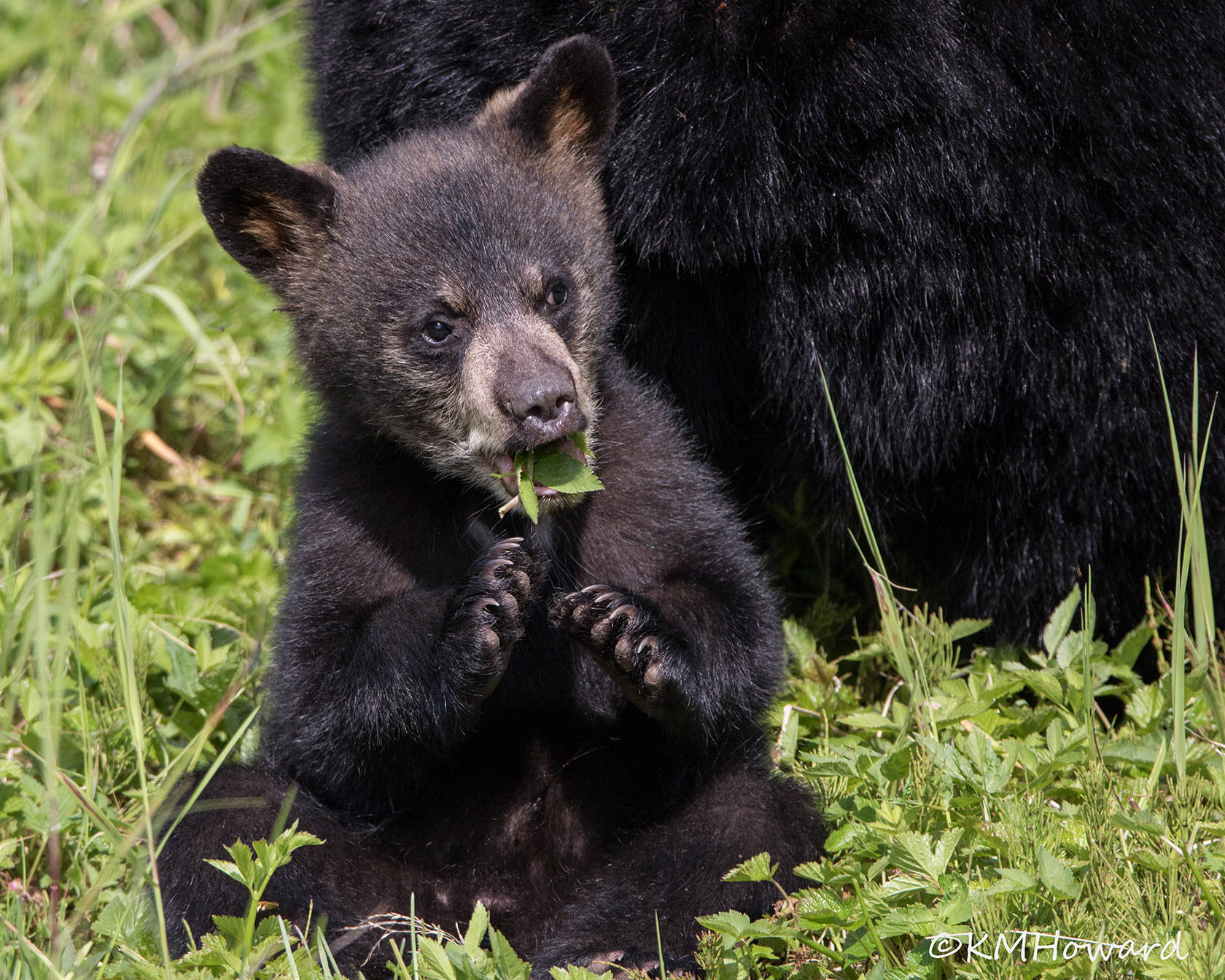Southeast Alaska is bear country. This time of year, Alaska’s ursine denizens are frequenting neighborhoods and local trails looking for food, often putting themselves within viewing distance of curious hikers, kayakers and campers.
Recently, bear activity at the Mendenhall Glacier Recreation Area (MGRA) has increased, the Alaska Department of Fish &Game wrote in a Wednesday press release. Mild winters have been good to local bears, allowing them to stay healthy and produce cubs, ADF&G said.
ADF&G has received multiple reports of female bears with new cubs in the Juneau area. Bear mothers, or sows, can become agitated if they think their cubs are in danger.
Here’s what Fish &Game wants you to know to stay safe while in bear territory.
A fed bear is a dead bear
• Bears are intelligent creatures and aren’t limited to picnic baskets or pots of honey. They’re looking for trash, chickens, barbecue drippings and pet and horse food, to name a few. Once bears become habituated to human food, they can become public safety hazards.
To avoid unintentionally feeding bears, manage your garbage, dog food and birdseed by keeping it out of reach. Secure garbage in bear-proof containers and keep it inside until just before scheduled pickup.
• For those keeping chickens or ducks, Fish &Game suggests installing electric fencing.
• Camping provides its own food issues. Plan how to keep food and bears separate before you head to your cabin or campsite. Keep a clean camp. If possible, hang your food where bears can’t reach it or place it in bear-proof food containers.
Cook where you can see and avoid cooking smelly foods as bears use their noses to search for food. Don’t fish around bears and don’t sleep where you eat and cook.
Keep your distance, don’t surprise a bear
• Like humans, bears enjoy their personal space. Fish &Game advises humans not to come any closer to bears than necessary.
• When photographing bears, use your zoom. Don’t risk getting too close for a better shot.
• Keep dogs on leashes and train them to obey voice commands.
[Douglas homeowner shoots 725-pound brown bear]
• When picking a campsite, avoid areas where you see or smell animal carcasses and don’t set up camp close to a trail.
• When hiking or camping, sing and talk loudly. This lets bears know you are there. When the terrain or vegetation makes it hard to see, make extra noise.
• Always hike in groups and walk with the wind at your back.
Close encounters
• If you encounter a bear, remain calm and try to observe what the bear is doing. Most bears are interested only in protecting food, cubs or personal space and will generally avoid conflict.
• If the bear appears not to know you are there, move away without alerting it. Keep your eyes on the bear.
• If the bear does notice you, face the bear, stand your ground and talk to it calmly. Let the bear know you are human by talking in a normal voice. Try to appear larger by standing close in a group or slowly waving your arms above your head. If a bear cannot tell what you are, it may come closer or stand on its hind legs to get a better look or smell. This behavior is usually curious, not threatening.
• If after taking the above actions a bear continues to focus on you or approach you, become more assertive: Raise your voice, use noisemakers or throw rocks or sticks. Use bear deterrent if you have some. Drive a bear off rather than let it follow you.
Attacks: Fight back or play dead
• Bear attacks are very rare. If a bear does make physical contact, you have two choices: Play dead or fight back.
• Play dead in defensive situations: Lie flat on your stomach, legs spread apart for stability with your hands protecting the back of your neck.
A defensive bear will usually end its attack if it feels you are not a threat, so remain motionless for as long as possible. If you move and a bear sees or hears you, it may return and renew its attack. In a prolonged attack, fight back.
• Rarely, bears may identify humans as potential food. Fight any bear that has been calmly focused on you or breaks into a tent or building. Concentrate on the bear’s face or muzzle with anything you have on hand.
• Bear deterrents like firearms or bear spray can be helpful but shouldn’t be used in place of common-sense alternatives. Bear spray can be effective at deterring bears at close range (15-30 feet). If you carry bear spray, read the directions, keep it handy and know how to use it.
• A wounded bear can be a greater threat to human safety, so firearms are only recommended for those who have experience using them. Appropriate firearms to shoot a bear are a .300-Magnum rifle or a 12-guage shotgun with rifled slugs. Heavy handguns may be inadequate in emergency situations.
Find more bear tips visit the Alaska Fish &Game website at http://bit.ly/1oZlDLS.

